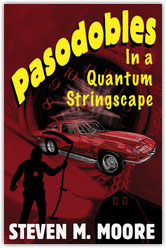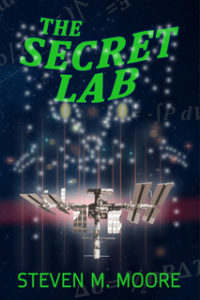Animals…
Have you ever read a Dean Koontz novel? He generally writes better horror stories than Stephen King, his main competitor, although he slipped a bit with his Frankenstein series. He’s like me, though, in the sense that he’s written enough books that he feels he can experiment a bit, so I’ll give hm a pass. Like King, Koontz thinks his stories are sci-fi. Who gave those guys that idea? Like King’s, Koontz’s stories are firmly entrenched in the horror/fantasy category. Even so, I’ve read more Koontz than King, because Koontz’s stories are a lot better (I even read the first Frankenstein book, which was enough to turn me off from that series).
One thing about most Koontz stories is that they often feature a dog. I get it. He loves dogs, especially golden retrievers. Including one as a character isn’t a bad idea if an author wants to appeal to dog lovers.
Animals are ubiquitous in modern literature. J. K. Rowling must like owls, for example. Every Hogwarts brat has one, and Harry Potter’s often plays an important role. Jack London probably wrote the best dog book, Call of the Wild. Then there’s Dumbo, definitely a main character if a bit freaky (maybe that is sci-fi because that elephant is a mutant). But Rudolph, who creeped into the Santa fable, didn’t make the cut for cousin Clement Clarke Moore’s “The Night Before Christmas” (that might be sci-fi too, with the sled being the UFO?), and he probably was just a reindeer with a bad cold from all the frigid weather.
 As much as I love animals, both tame ones and wild, they don’t often play a role in my stories. By prodding the old memory cells a bit, I remember an early short story that features a dog taken over by an ET (now that is sci-fi, and it’s found in my collection Pasodobles in a Quantum Stringscape—I can’t remember the story’s title, though). Another short story revisits a rather famous cat (it takes place around Saturn—see the blog archive “ABC Shorts”). Perhaps I should say something more about that cat so dogs don’t dominate this article?
As much as I love animals, both tame ones and wild, they don’t often play a role in my stories. By prodding the old memory cells a bit, I remember an early short story that features a dog taken over by an ET (now that is sci-fi, and it’s found in my collection Pasodobles in a Quantum Stringscape—I can’t remember the story’s title, though). Another short story revisits a rather famous cat (it takes place around Saturn—see the blog archive “ABC Shorts”). Perhaps I should say something more about that cat so dogs don’t dominate this article?
 Mr. Paws is undoubtedly my most important animal character, and The Secret Lab is my only novel to feature an animal as a main character. A. B. Carolan rewrote that novel to start his “ABC Sci-Fi Mysteries” series for young adults (now four novels strong—A. B. has a cameo appearance in my novel Intolerance). In the novel, Mr. Paws lives on the ISS in the future; he’s the intelligent mutant cat who helps four tweens expose a conspiracy. It’s a good cat story, but it’s more than that.
Mr. Paws is undoubtedly my most important animal character, and The Secret Lab is my only novel to feature an animal as a main character. A. B. Carolan rewrote that novel to start his “ABC Sci-Fi Mysteries” series for young adults (now four novels strong—A. B. has a cameo appearance in my novel Intolerance). In the novel, Mr. Paws lives on the ISS in the future; he’s the intelligent mutant cat who helps four tweens expose a conspiracy. It’s a good cat story, but it’s more than that.
Why don’t animals appear more in my stories? You might already know. Animals are more interesting when they almost appear human! (Walt Disney made a fortune making that happen.) My Mr. Paws beats Koontz’s dogs and Rowling’s owls, precisely because he’s more like a human! In other words, humans are more interesting than animals to write about. And there are many humans that I don’t like who can be model villains, while there are few animals that I don’t like. You must have both the bad and the good in your fiction. Take that, Ms. Rowling and Mr. Koontz!
By the way, for those of you who miss having an animal in my stories, you might like that cat Boris in The Klimt Connection (coming soon!) where there’s both a cat and dog. They don’t have very important roles, though, although the dog’s presence is symbolic. (The cat’s more there to annoy an MI5 agent detested by Esther Brookstone!)
***
Comments are always welcome. (Please follow the rules listed on the “Join the Conversation” web page. If you don’t, your comment ends up as spam!)
The Secret Lab. A. B. Carolan’s rewrite of this sci-fi mystery improved this novel about a mutant cat and his four human pals on the International Space Station far in the future. The four tweens want to discover Mr. Paws’ origins, but they end up uncovering an old conspiracy. This novel for young adults and adults who are young at heart (especially cat lovers!) is available wherever quality books are sold in both ebook and print.
Around the world and to the stars! In libris libertas!
